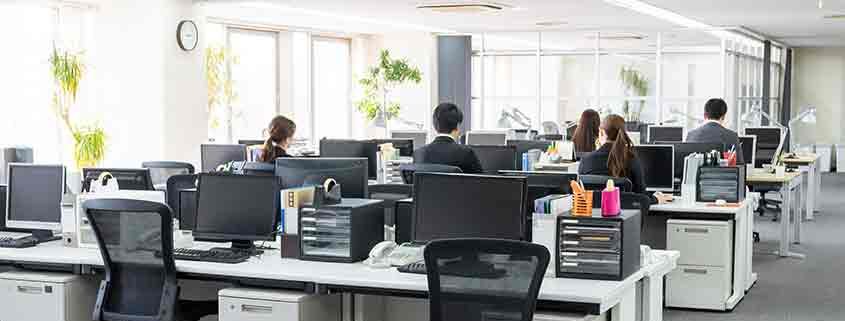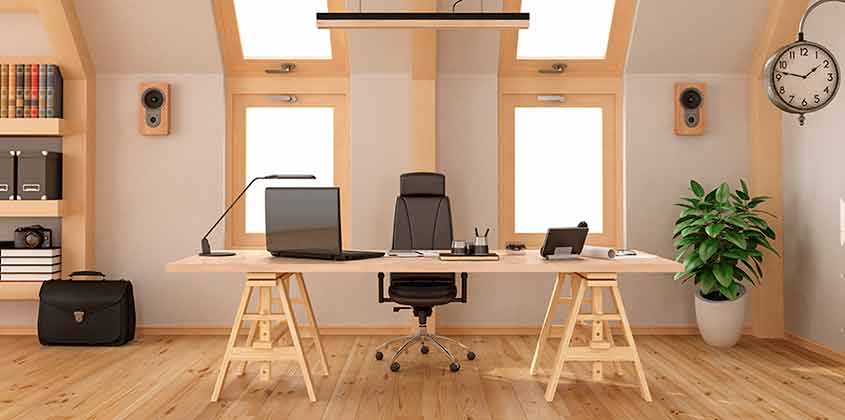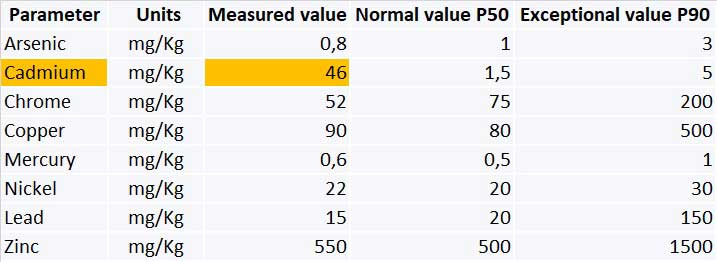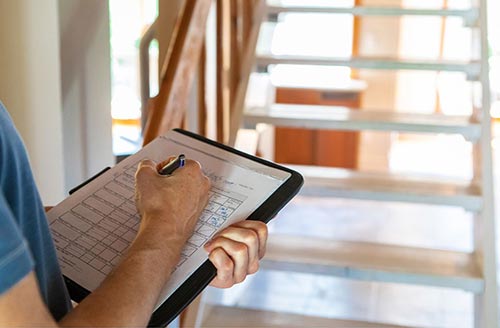RISKS IN A SICK OFFICE
Nowadays most work is carried out indoors. We often worry about comfort and accidents, but what about health?
More than half of office workers suffer from work-related problems: headaches, conjunctivitis, respiratory difficulties, dermatitis, depression…
This problem is known as the syndrome of the sick office and is defined as a set of diseases caused or stimulated by air pollution and dust in enclosed spaces.

POLLUTANTS IN THE OFFICE
Multiple contaminating factors can add up in the office, but all of them can be solved:
- Electromagnetic fields. From electrical installations and wireless technologies.
- Electrostatic charges. Generated by synthetic fabrics and low humidity.
- Volatile organic compounds. Released by some furniture and the glues they contain, industrial cleaning products and to a lesser extent by paints. In addition to bad odors, some of them are carcinogenic.
- Formaldehyde. Released by glues and varnishes. It is the most common odorous and carcinogenic pollutant in offices.
- Plasticisers. They come from wiring and are breathed in through dust.
- Biocides. Applied consciously to eliminate cockroaches, or without being aware of them through other products.
- Carbon dioxide. From respiration and accumulated from insufficient ventilation.
- Heavy metals. They may be present in flame retardants or wood preservatives and become part of office dust.
- Nanoparticles. Fine particles from the use of laser printers and artificial furniture.
- Cold and sometimes flickering or insufficient artificial lighting.
- Noise pollution from co-workers or outside.
- Temperature and relative humidity. Important for comfort and well-being. Low humidity raises dust.

HOW TO PREVENT DISEASES
The most effective actions to heal an office are listed:
- Smooth and permanent ventilation, preferably mechanical.
- Grounding of all electrical installations and metallic elements.
- Internet connection via Ethernet cabling.
- Fine cleaning by vacuum cleaners with HEPA filters.
- Fine filtering of the air coming in from outside.
- Filtering of laser printer vents.
- Laminate furniture is better than chipboard.
- Imitation of natural lighting when natural is not possible.
- Acoustic shielding between workers and between sources.
- Natural pest prevention systems such as laurel or lavender.
- Natural cleaning products.
- Humidity and temperature control.

Occupational risk legislation focuses on preventing accidents, but contains hardly any limit values for most of the risk factors that cause illness and reduce office productivity.
Today, it is already possible to carry out professional measurements of air and dust quality using statistical methods. They make it possible to supplement the limited legal regulation and to identify whether there are toxic chemical compounds whose concentration exceeds the expected values.
There are legal limits for electromagnetic radiation, but these are below the thresholds where science finds effects such as fatigue, insomnia, cardiac arrhythmias or simply a loss of wellbeing, all of which affect the health of workers. It is recommended that they be measured by complementing the current legal limits with international standards for indoor pollutants.




